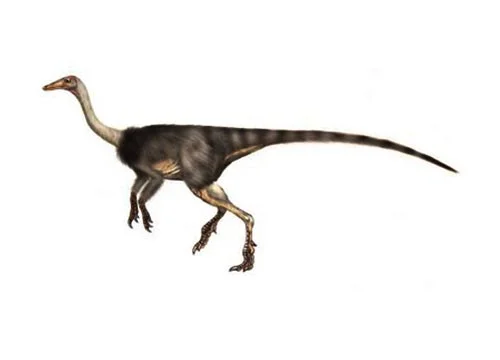Anserimimus (Goose mimic)

An-ser-e-mime-us
Rinchen Barsbold - 1988
Carnivore
Estimated 3 meters long
Large Theropod
A. planinychus (type)
Mongolia, Bayankhongor Province - Nemegt Formation
Late Cretaceous, 84-65 million years ago
Anserimimus Facts
Anserimimus (/,aens@rI’maIm@s “goose mimic”) is a genus belonging to the ornithomimid dinosaurs, which was found in the Late Cretaceous Period of what is today Mongolia. It was a tall and fast-running animal, perhaps an all-animal.
It was discovered inside the Mongolian aimag or province of Bayankhongor during an expedition by Soviet and Mongolian towards the Gobi Desert in the latter part of the 1970s. Mongolian paleontologist Rinchen Barsbold was the first to name Anserimimus on the 28th of October, 1988, which combines the Latin anser, which means “goose” with the Greek mimos, which means’mimic’. Anser is the general name for a variety of species of geese.
There is only one fossil and its Holotype IGM 100/300, which is comprised of a fully articulated and articulated skeleton that is missing the lower jaw and skull. Anserimimus was an ornithomimosaurian of medium size, estimated to have had a length of three metres and a weight of fifty kilograms. Robert Bronowicz in 2005 gave an in-depth explanation of the species and provided additional information to it and a partial skeleton of the sample ZPAL MgD-I/65.
There are many key differences in it from the related species, such as its hand claws being lengthy and low in the back, its forelimbs being long and built stronger, its scapulocoracoid crests being fused, and its foot being arctometatarsalian with the third metatarsal separating from the front of the metatarsus.



